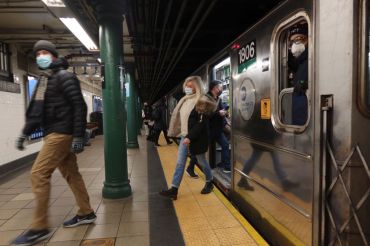The Middle Dominates in Down Markets
By Robert Knakal January 11, 2018 6:32 pm
reprints
From almost every perspective, the 2017 investment sales market left a lot to be desired. While the final numbers for the year are still a couple of weeks away, the year-to-date numbers through the middle of the fourth quarter remained consistent with the trends we saw unfolding over the past two to three years.
The cyclical peak of the investment sales market in New York City was clearly in 2014 and 2015. In 2014 there were 5,534 properties sold in the city, an all-time record by more than 10 percent. This banner year was followed up by a dollar volume of sales in 2015, which hit $80.4 billion, another all-time record. Since these record years, activity in both of these key volume metrics has been sliding backward. The year-end numbers for the number of properties sold will likely show a third year of reduced activity and the dollar volume will likely show a second year of retreat. Values have also been sliding, particularly in the Manhattan submarket where all product types are down slightly. In the outer boroughs, values were mixed with some property types up slightly while others followed Manhattan’s lead.
While the metrics of volume and value are the most talked about in the market—and they should be because they are so indicative of how the market is performing—other metrics that are indicative of the health of the investment sales market are the average price of a property sold and the percentage of transactions occurring above $100 million. Both of these metrics are highly correlated with the health of the sales market.
On a citywide basis, midway through the fourth quarter of last year, the dollar volume of sales was on pace for about 41 percent of it attributed to transactions at $100 million or above. This will be the lowest percentage the market has seen since 2009 when the percentage was 33 percent. Over the last nine years, the average percentage has been 54 percent and was at a high of 67 percent in the market’s peak year of 2015. If we look at just Manhattan, the percentages are, not surprisingly, much higher. In 2017, the percentage of the dollar volume of sales occurring in the over-$100 million market is likely to end up around 60 percent. If this is the final number, it will also be the lowest percentage since 2009. The average percentage over the last nine years has been about 67 percent and hit a cyclical peak in 2015 at 81 percent. These numbers substantiate the fact that the “middle market” becomes much more dominant in tougher times.
Given the impact of extraordinarily large transactions at these dollar volume metrics, it is important, and in many ways more telling, to look at the number of properties sold.
On a citywide basis, midway through the fourth quarter of 2017, just 6 percent of all sales exceeded $100 million. Therefore, 94 percent of all sales in the city were below $100 million and 83 percent were below $25 million. In Manhattan, again 6 percent of the sale transactions were above $100 million. The biggest difference between the entire marketplace and Manhattan is the activity in the $25 million to $100 million bracket. Looking at the broader market, 11 percent of sales transactions occurred in this range while the percentage grew to 19 percent in Manhattan. Comparing these metrics over time would have to be inflation (appreciation) adjusted to have credibility, and we are working on that analysis.
These additional metrics support the position I put forth back in the fourth quarter of 2015 that the investment sales market in New York City was entering correction mode. We are now in the 28th month of this correction, which has been slow and drawn out. The reason for this is because there hasn’t been any particular event to catalyze this correction. It has simply been the natural cyclicality of the market taking hold. So the more important question is, How long will this correction last and what will the impact on value be when things start to improve? During the recent Great Recession in 2008 through 2010, values in New York City dropped on average by 38 percent on a price-per-square-foot basis. Even worse, during the Savings and Loan Crisis in the early 1990s, values dropped on a price-per-square-foot basis by a whopping 58 percent on average. If the worst we see in this correction is a single-digit drop, we should consider this a win, at least on a relative basis. I should also note that during, and subsequent to, the recession in the early 2000s, volumes dropped for four consecutive years but average values never fell.
When we have the 2017 year-end numbers in hand, we will provide insight into the market’s direction. Meanwhile, there are many externalities that could affect the market this year.
Robert Knakal is the chairman of New York investment sales for Cushman & Wakefield (CWK).


